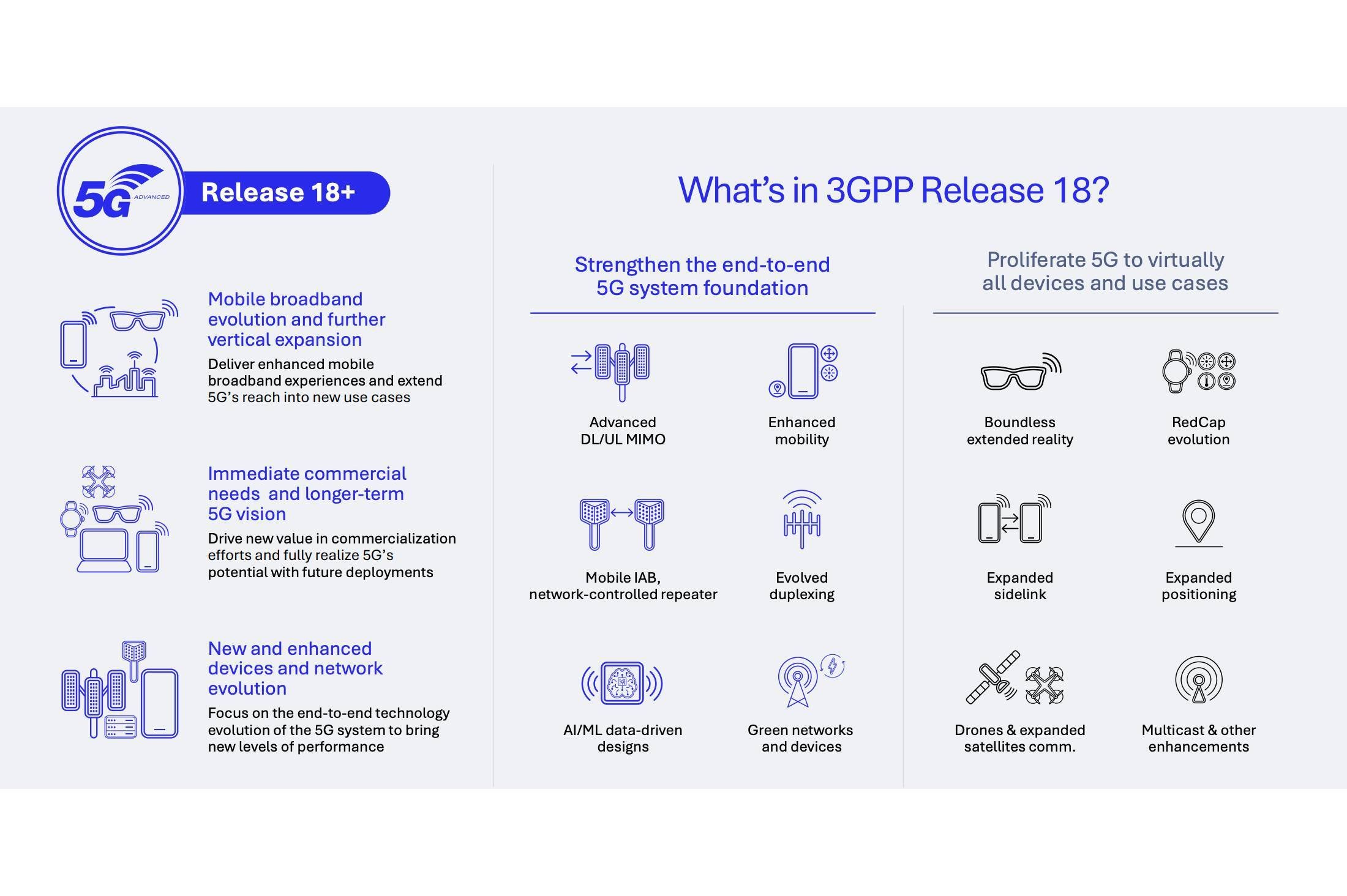5G Advanced is a new set of network capabilities that push 5G to its full potential and make new use cases possible. It could be a while before AT&T and Verizon deploy similar upgrades, as unlike T-Mobile, they did not begin 5G rollout with Standalone (SA) architecture which is a prerequisite for 5G Advanced.
5G Advanced will bring a lot of enhancements to the table, including faster speeds, lower delays, greater efficiency, and improved capacity.
These improvements will elevate Extended Reality (XR), cloud gaming, and online conferencing experience and make location services more accurate.
The 5G Advanced standard is based on Release 18, the latest network standard specifications developed by the 3rd Generation Partnership Project (3GPP), a telecommunications standards development entity.

5G Advanced will open up new possibilities. | Image Credit – Qualcomm
Your phone will only support 5G Advanced if it has a Release 18-compliant modem. Silicon vendors like Qualcomm and MediaTek implemented the specification before the rollout, so most recent flagships support it.
As Android Authority reminds us, this leaves out the Pixel 9. That’s because while the modems in Snapdragon 8 Gen 3 and Snapdragon 8 Elite that power recent Android phones such as the Samsung Galaxy S25 and OnePlus 13, and the Qualcomm Snapdragon X75 modem inside the iPhone 16, the Pixel 9‘s Exynos 5400 modem doesn’t support the Release 18 standard.
Of course, it’s entirely possible that the Exynos modem unofficially supports Release 18, but that just sounds like wishful thinking.
This means that Pixel users will have massive FOMO (Fear of missing out) as their handsets will not be able to experience the improvements 5G Advanced will bring. What’s more, Google’s next flagship, the Pixel 10, may also not fully support 5G Advanced, as it’s rumored MediaTek’s T900 modem will use the 3GPP Release 17 5G spec.
That’s not necessarily a downer, considering the 5G upgrade targets cutting-edge use cases such as Extended Reality (XR) and cloud gaming.











